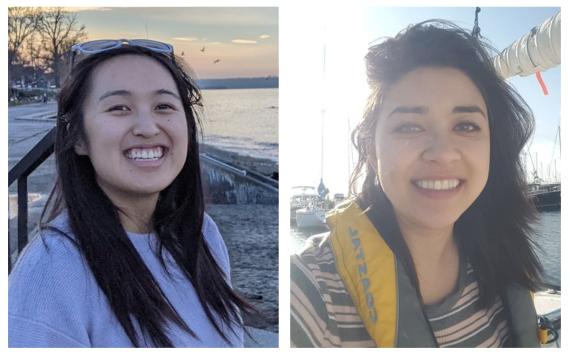Congratulations to Emily Ahn and Sara Ng on receiving Excellence in Linguistic Research Fellowships to fund their dissertation research.
Emily Ahn’s research contributes to the fields of phonetic and phonological typology, as well as to the development of technologies that will serve diverse languages and communities. More specifically, Emily seeks to improve automated tools that align sound units with the speech signal. She plans to extend her second Generals Paper research, which centered on evaluating the temporal quality of phoneme alignments given phonological constraints, to assess how the pronunciation (or phonetic) variation of phonemes affect the system’s output, and to propose solutions to deal with these types of “linguistic variation” outliers. This line of research dives into the phonetics-phonology interface and asks the question: What is a good representation of a speech unit that is faithful to the acoustics yet generalizable across languages? Answers to these questions will not only further the field of Linguistic science, but also better inform the technologies that serve diverse communities.
Sara Ng’s research focuses on the production and perception of speech sounds, and the application of computational models to these processes. With respect to speech production, she is interested in corpus-based approaches to understanding speakers’ use of suprasegmental features. Her perceptual work focusses on refining the so-called cue profile procedure. The cue profile is an experimental design that is used to quantify a hearing-impaired listener’s differential use of spectral (e.g. formant frequency) and temporal (e.g. rise time) cues to disambiguate speech sounds, producing a measure called the cue weighting angle. Sara’s dissertation research will bring the cue profile closer to the goal of becoming a clinical diagnostic, by continuing to reduce the number judgments a listener must make as well as more efficiently selecting the stimuli they are exposed to. To accomplish this, she will employ a machine learning technique known as Reinforcement Learning to adapt the cue profile to dynamically select stimuli and employ early termination of the procedure when it is determined that further judgments would produce diminishing returns.
